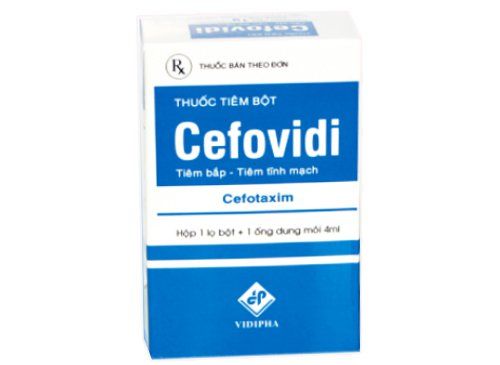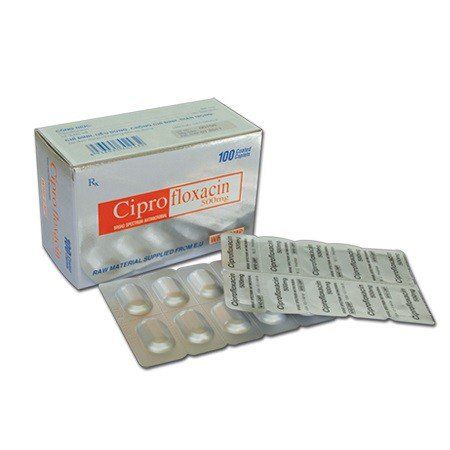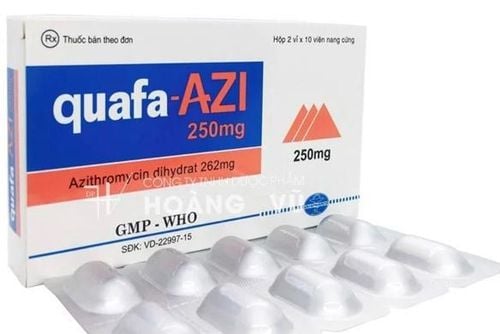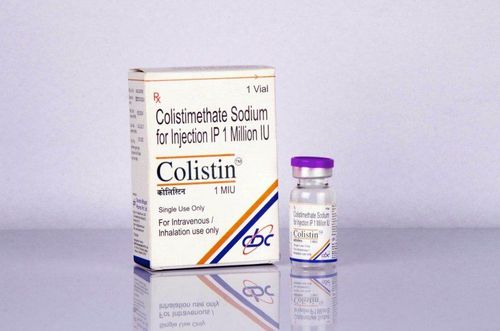This is an automatically translated article.
Tazopar is a combination antibiotic with a broad spectrum of activity against many strains of Gram-negative and Gram-positive bacteria. So what is the composition and mechanism of action of the drug?
1. What is Tazopar?
Tazopar contains the main ingredients Piperacillin and Tazobactam.
Ingredients Piperacillin - is a semi-synthetic penicillin antibiotic with a broad spectrum of gram-negative and gram-positive aerobic and anaerobic bacteria. The drug works by inhibiting the formation of the cell wall of bacteria, thereby preventing their multiplication. The drug is not absorbed from the gastrointestinal tract, used by intramuscular or intravenous injection. After entering the systemic circulation, the drug is distributed into most body tissues and fluids, including cerebrospinal fluid, and is eventually eliminated in the urine and bile. Components Tazobactam - is a beta-lactam antibiotic (triazolyl methyl penicillanic acid sulfone), a potent inhibitor of many beta-lactamases, especially plasmid-mediated enzymes, which are common pathogens. resistant to penicillins and cephalosporin antibiotics, mainly third generation cephalosporins.
The combination of Tazobactam and Piperacillin in Tazopar increases the antibacterial spectrum of piperacillin including bacteria resistant to other antibiotics in the beta-lactam group, treatment of infections in combination or pre-emptive therapy. Antibiogram results.
2. Indications of Tazopar
Tazopar is used to treat the following infections
Systemic infections or infections on susceptible strains of bacteria in the lower respiratory tract, urinary system with complications. Intra-abdominal infections, skin and soft tissue infections. Septicemia . Obstetric and gynecological infections. Multiple infections. Co-infections in patients with reduced resistance when antibiogram results are not available.
3. Contraindications of Tazopar
Do not use Tazopar in the following cases
Patients who are allergic to Piperacillin, Cephalosporin antibiotics, beta-lactamase inhibitors or any other ingredient of the drug. Children under 12 years of age are not indicated for taking Tazopar. Note when using Tazopar
Use the drug with a small amount in the upper arm to test the body's allergic reaction before taking the drug at the indicated dose. Check liver, kidney and hematopoietic function before treatment or during long-term treatment with Tazopar. Monitor patient's coagulation and bleeding function during treatment because the risk of bleeding may appear when using beta-lactam antibiotics. Long-term drug treatment should prevent drug-resistant strains of bacteria causing superinfection or fungal infections. Administration of high doses intravenously may cause neuromuscular agitation or convulsions. Caution should be exercised when using the drug in patients receiving cytotoxic drugs or diuretics due to the risk of hypokalemia. Tazopar given in high doses for a short period of time to treat gonorrhea can alleviate the symptoms of syphilis. There is not enough evidence to ensure the safety of the fetus and nursing infant, so pregnant and lactating women need to consider the benefits when using the drug.
4. Tazopar drug interactions
Concomitant administration of Probenecid with Tazopar increases the half-life and clearance rate of the drug, reducing its bioavailability.
Anticoagulants, high doses of Heparin, when combined, will affect blood clotting function, platelet function,...
5. Dosage and how to use Tazopar
How to use
Tazopar is prepared as a powder for injection with a content of 4.5g. Mix the drug with 20ml of distilled water or 0.9% NaCl solution for intravenous injection. If intravenous is used, dilute with at least 50 ml of solution. Do not mix with other drugs in the same syringe or infusion bottle. The drug is stored at room temperature from 15-25°C, the shelf life is 3 years. Dosage
Patients are adults or children over 12 years old: Intravenous injection 1 vial (4.5g)/time x 3 times/day. Patients with renal failure with glomerular filtration rate of 20-80 ml/min: 1 vial (4.5 g) intravenously, x 3 times/day. Patients with renal failure with glomerular filtration rate less than 20ml/min: Intravenous injection 1 vial (4.5g)/time x 2 times/day. Patients with renal failure on hemodialysis: Intravenous injection 1 vial (4.5g)/time x 2 times/day. After each cycle of intravenous dialysis 1⁄2 vials (4.5g) / time.
6. Tazopar side effects
Some unwanted effects may be encountered when using Tazopar
Thrombophlebitis. Allergic reactions, pruritus, erythema, urticaria, eczema. Constipation, diarrhea, nausea, digestive disorders. Bacterial superinfection, fungal infection. Increased sweating. Inflammation of the oral mucosa. Muscle weakness, muscle pain. Hypotension, hallucinations, fever, flushing, fatigue, edema. Decreased white blood cell count, increased eosinophils, increased platelets, positive Coomb's test. Hypokalemia, transient increase in liver enzymes, increase in blood urea and creatinine. In summary, Tazopar is a combination antibiotic with broad antibacterial spectrum, mandatory prescription by doctors in mixed infections, severe infections without antibiogram results. Use of drugs must follow the right time and dose to avoid drug resistance causing superinfection.













